International Journal of Aquaculture and Fishery Sciences
Sustainable freshwater aquaculture in the EU and in Hungary
György Páczay*
Cite this as
Páczay G (2018) Sustainable freshwater aquaculture in the EU and in Hungary. Int J Aquac Fish Sci 4(3): 039-044. DOI: 10.17352/2455-8400.000042There is a huge potential in freshwater aquaculture in the EU and in other countries in the World. As for the World food demand fish had the second highest consumption levels, at 27.9 percent in 2014. There will be a sharp increase in demand for fish and aquaculture products as the UN FAO projects around 9 billion people living our planet by 2050. The economy has already started its adaptation. While the World aquaculture production has increased from 7 to 82 million tonnes per year from 1990, there is no rise in the EU where we can observe a stagnation in production around 1.26 million tonnes annually. The EU has its potential: coastline around 68 thousand km, 500 thousand natural lakes, etc. Next to seawater aquaculture there are several freshwater fish species such as trout, carp or catfish whose production could be radically increased by investing, innovating and creating many new jobs in the freshwater sector. A small country, Hungary can show good examples in pond and intensive fish farming despite the country has not reached its full potential yet. The boost could be managed by increased grants and other incentives for investments, innovation, cooperation and promotion. The valuable ecological services which fish farmers provide year to year have also to be rewarded. So, let’s start to act.
Introduction
The projections of the UN Food and Agricultural Organisation (FAO) in 2012 indicate that World population could increase by more than two billion people from today’s levels, reaching 9.15 billion by 2050. Incomes will grow even faster. To meet increased nutritional demand, FAO projects that global agricultural and fishery production in 2050 should be 60 percent higher than in 2005-2007 [1]. This is a smaller increase than the agriculture sector has achieved over the past half century, but still raises concerns about how it can be achieved sustainably and with more efficient preservation of natural resources and the environment. See the FAO projection for World food consumption which indicates the highest demand in Sub-Saharan Africa and Asia (East and South). As for patterns in consumption meat was consumed the most, at 31.4 percent in 2014 according to recent studies [2]. Fish had the second highest consumption levels, at 27.9 percent. Cereals consumption represented 11.7 percent of the total. Fruits’ share of consumption was 10.6 percent, followed closely by vegetables at 10.5 percent, and then bread at 5.5 percent. The smallest food group in terms of world consumption was rice, at 2.4 percent. The following figure underpins the role of fish in food-security (Figure 1).
The pie-chart also shows that overall global consumption is widely dispersed among food types; no one type has a majority share. Animal-based foods (meat and fish) do make up the majority of consumption when added together. It is important to note, however, that based on the information in this chart no conclusions can be drawn about the dietary diversity of an individual person (Figure 2).
Focusing on fish food we can state that the traditional activity, capture of fish was responsible for providing enough fish and seafood for people. However, fishermen have to align their fishing activities with more and more environmental obligations, including obligations to take conservation and management measures designed to maintain or restore marine resources and mainly fish stocks. At the World Summit on Sustainable Development at Johannesburg in 2002, the majority of fishing states including the European Union and its Member States committed themselves to act against the continued decline of many fish stocks. There has been less and less captured quantity of fish from the seas since the fourth quarter of the 20th century. This quantity has to be replaced by farmed fish either in seas or in freshwater installations (in rivers, ponds, intensive fish farms). It is not an accident that the aquaculture sector has raised a lot during the last 40 years. However, there is a significant difference between the development of aquaculture sector in the EU and in other countries [3]. The next info graph shows well that the fishery sectors are developing in a different way. While the World aquaculture production has increased from.
7 to 82 million tonnes per year from 1990 (which has not reached the amount of captures – around 90 m t / year – yet), there is no rise in the EU where we can observe a stagnation in production around 1.26 million tonnes annually. As for the Union, the aquaculture sector produces around 20 percent of the whole fisheries (around 6.4 million tonnes annually). The share of aquaculture – and I mean here principally seawater production – is he following in the EU: Spain - 23 %, the UK - 17 %, France - 16 %, Italy - 12 %, Greece - 8 %, the Netherlands - 5 % and Poland 2,7 % (the figure indicates that Hungary is in the middle among the EU 28) [4] (Figure 3,4).
Finally, I have to go to another topic, which is closely linked to seawater aquaculture. Globally, invasive alien species (IAS) are considered a major threat to native biodiversity, with the International Union for Conservation of Nature (IUCN) citing their impacts as “immense, insidious, and usually irreversible” [5]. Independently their introduction by accident or deliberately into a natural environment, these species threaten the ecological stability of invaded habitats and native species therein, as these are highly sensitive to various interactions with these non-native species (e.g. herbivory, predation and competition). It is estimated that 11 percent of the about 12,000 alien species in Europe are invasive, causing significant environmental, economic (estimated at 11 billion euros annually for the European Union) and social damage. Considering recent trends, it is reasonable to expect that the rate of biological invasions into Europe will increase in the coming years. This situation is the prevailing also in aquaculture, where possible impacts include biodiversity loss - sometimes even the extinction of native species - and economic damage, for example, fish stock losses and infrastructure damage. A multiplicity of pathways (e.g. emerging tropical fish species and animal diseases in European waters) and vectors (e.g. fishmeal, angling equipment) currently exist to facilitate and indeed hasten the introduction and spread of potential invasive alien species throughout the World. Climate change deeply exacerbates the problem. Although not all nonnative species introductions result in harmful or damaging outcomes, current evidence indicates that the increasing scale of invasive alien species introductions necessitates serious scrutiny and, moreover, a coordinated international and European response. It has to be added that the risk of spreading invasive alien species in freshwater aquaculture is much smaller than in the seawater one. In that latter it so difficult to separate fish farms - protected by simple fishnets in many cases - from the wild, while in inland aquaculture the vast majority of fishponds are totally separated from natural waters. In Hungary, for example, fishponds generally have closed recycle system, which ensures the protection of farmed fish from their wild counterparts. However, fish farmers and national authorities are also vigilant regarding aquaculture activities in natural fresh waters such as rivers and lakes, but the efforts are less intensive than in the case of seawater aquaculture.
The role of aquaculture is becoming more and more important in EU’s food and fishery policy.
As an economic integration organisation, the European Union is a full member of several scientific committees that have been established to protect certain fish stocks. The proposals of these committees are regularly adopted by the EU and incorporated into Union law. These regulations make it clear that the European Union is compelled to put adequate limits on deep-sea fishing in order to maintain the marine fish stocks. The quantity of exploitable deep-sea fish is therefore being constantly and considerably reduced (by approximately 30%) [6]. Hence, the EU’s common fisheries policy must devote much more attention to sustainable fish production — aquaculture — and especially to seawater and freshwater fish farming. The tendency of decreasing captures is also valid to other countries in the World, so the aquaculture will be placed in the centre of nutrition Worldwide. The following text, formulated in the European Parliament could have been introduced in any country’s fishery policy. “Whereas the fish farming and shellfish industries play an important and valuable role in terms of the economy, employment and social and environmental matters with respect to improving the quality of life of the coastal and inland areas of the Union and of outermost regions and to contributing to the nutritional and food security of Europeans” [7]. I have already indicated that a huge growth is observed in fish farming all around the World, from the USA towards Norway to China and India. But despite a deep knowledge, great investments and good intentions and efforts EU aquaculture is stagnating, in contrast with increasing growth seen in other regions of the World. It is estimated that aquaculture production in the EU only covers 10 % of the domestic demand for fish and whereas more than a half of the demand for fishery products comes from imports from other countries [8].
The conditions are given for a developed aquaculture. Europe is surrounded by four sea regions: the Mediterranean, Black and Baltic Seas, and the North Atlantic Ocean which also includes the North Sea. Europe also conducts many maritime activities in the Arctic. The EU has a coastline of 68,000 km – more than 3 times longer than that of the United States and almost twice that of Russia [9]. If we include the European Economic Area member countries: Iceland, Norway and Turkey, it is 185,000 km. There are more than 500,000 natural lakes larger than 0.01 km2 (1 ha) in Europe. About 80 % to 90 % of these are small with a surface area of between 0.01 and 0.1 km2, whereas around 16,000 have a surface area exceeding 1 km2. Furthermore, here are quite long rivers in the Union: the Danube – 2,860 km (1,780 mi), the Tisza – 1,358 km (844 mi), the Rhine – 1,236 km (768 mi) or the Vistula – 1,047 km (651 mi). These flows have large river basins such as the Danube with its 817,000 km2, or the Rhine with its 185,000 km2) [10]. The Danube itself is responsible for the drainage of a bit less than 25 % of the whole EU territory. If we would like to understand how shocking the lag of the EU in the field of aquaculture is, we need to check the performance of Norway. This Scandinavian country produced more fish in 2017 than the EU 28. An annual farming of around 1.2 million tonnes of salmon is imposing. It is quite close to the whole EU performance of 1.26 million tonnes (all fishes). The aquaculture of rainbow trout is also fine with its 65,447 tonnes. The next table denotes the aimed result for the whole European aquaculture sector [11]. So, the potential is given but it is not explored yet. Good examples exist. One major field is the freshwater fish farming (Figure 5).
Freshwater aquaculture
There are many good examples of freshwater aquaculture in Europe despite the fact that this sub-sector has been stagnating – if we consider the volume, slightly decreasing – in the last 15-20 years. However, there are many opportunities for freshwater fish farming either in natural rivers or lakes – of course, with an appropriate barrier to prevent mixture of natural and farmed fish and to ensure the necessary animal health protection – in many areas. In North and South-America or in Central Asia for example there are many big settlements like the fenced area in the Aral-sea with more than 100 million cubic metres [12]. The reader can easily state the strength of the global freshwater aquaculture production by watching the following FAO pie-chart. The answer is 42 % which is a higher rate than normally expected (Figure 6).
Unfortunately, we cannot see the same or at least similar development in the EU. The freshwater sector constitutes only 20 % of the seawater one – marine and shellfish aquaculture – despite strong opportunities – river basins, lakes and deep knowledge – in Europe. As for the given sector Turkey – normally the European statistics are dealing with this large country despite it is outside the EU but inside the European Customs Union – has the biggest potential of freshwater fish farming around its 34 % performance concerning the produced quantity. Italy is second with 11 %, followed by France (10%), Denmark (9%), Poland (9%) and Spain (5%)1. [13]Checking the so-called landlocked EU member states – those countries that have not seaside at all – Hungary has the strongest aquaculture sector with its 4 % share of total EU production.
The figure on the right clearly shows this stagnation not only in production but much more in sales of EU freshwater products. Our objective is to radically raise the sales of intensive and extensive freshwater fish because this is the future in nutrition of people also in Europe. We see huge potential in carp production despite it is only one seventh of the EU production. The leading fish is trout (79%) in fresh waters. The rest is not significant currently with catfish and eel (2%) and sturgeon (1%) production [14] (Figure 7).
Freshwater fish farming in hungary
For decades, Hungary has played an important role in Europe’s freshwater fish production. The main reason for this is that this country has favourable hydrographic characteristics and has great production traditions. Decades around the World Hungarian fish farming has been recognized, especially pond farming, though its splendour can be made in the 1970s when Hungary was a “great fishing power” in Europe according to the FAO. The traditional and developed Hungarian carp breeding techniques had been disseminated by Hungarian experts for decades. There are few freshwater fish farming countries in the World where they would not have used the Hungarian education or on-site works of Hungarian specialists [15].
The political transition (from communist dictatorship to democracy) in 1990 has resulted a huge drop also in freshwater fish production like in other economic sectors. However, this segment has started to emerge from the beginning of the 21st century and especially from the accession of the country to the EU in 2004. New, modernised fish farms have appeared using energetically efficient and environmentally friendly techniques. The waste management and food hygiene was also in the centre of investments. The officially recognized Hungarian Aquaculture and Fisheries Interbranch Organization (MA-HAL) has been established recently, which includes every market player from the producing level to the trade and it elaborates the development direction of the whole freshwater sector, gives advices in investments, manages the common work of marketing and promotion of fishery products and collects data and makes statistics. According to the Hungarian Research Institute of Agricultural Economics there were 29,604 ha fish pond in the register and 26,065 ha was farmed in 2017. This shows an about 7 % increase to the situation 10 years ago [16]. The performance of fish production was quite good, 21,208 tons of fish in 2017. Our major fish species is the common carp with 78 %, but the white silver carp, the grass carp and the catfish (african bullhead and grey catfish) is also commonly bred. The racial distribution of fish production for table consumption in 2017 is well explained on the next pie-chart. It is not an accident that the common carp is the most farmed fish in Hungary, because in this country fish farmers use primarily carp-based polyculture fish production. In Hungary, the vast majority of fish farming areas is concentrated in the countryside. Most of the pond fish production has been doing in the same regions for many years, which are the so-called Southern Transdanubia (south-west of the country), the Northern Great Plains (north-east of the country) and the Southern Great Plains (south-east of the country) [17]. The common carp production for table consumption was 18.6 % higher in 2017 than the previous year. The growth per hectare growth was 563.9 kg for all fishes and 462.3 kg per carp. Hungary has played a decisive role in carp production for decades. The main reason for this is that this country has favourable hydrographic characteristics and great production traditions. Decades around the World Hungarian carp farming has been recognized, especially in ponds, though its splendour can be made in the 1970s when the FAO described Hungary as “great fishing power” in Europe. Intensive fish farms performed 17.6% in fish production in 2015 of which the largest amount was african bullhead (3.3 thousand tons, 91%), followed by sturgeons (279 tonnes, 7%) and trout (61 tonnes, 2%) [18]. The main characteristic of operating modes of fish farms in Hungary is that they are dealing with fish production in a wide spectrum – from nursing to fish production for table consumption. They produce carp normally in a three years’ time, but the feeding with innovative feed-mixes enables to reduce this time to two years. These new methods are very widespread in Hungary [19]. The next figure presents the change in the fish production of aquaculture in 10 years’ time. The export value of Hungarian aquaculture products came close to 26.25 million euros (including re-exports) in 2016, while the import value was close to 93.75 million euros (the surplus is made by imports of frozen marine fish and seawater aquaculture products). In exports, live fish was the most important product, and it was the only product group among aquaculture products whose foreign trade turnover was positive each year. The production of live fish for 2010 amounted to 1 or 2 thousand tonnes, but in 2016 it exceeded 7,000 tonnes. The import of live fish is less significant, with only 1.6 thousand tonnes in 2016 [20]. The positive balance of live fish exports is primarily the export of common carp and other live fish like silver carp or catfish year to year (Figures 8-9).
As for efforts against the spreading of invasive alien species, the ecological fishing aiming the capture of invasive alien fish species in natural waters is still permitted and incentivised [21]. Furthermore, fish farmers and authorities are immigrating a sort of predatory fish such as pickerel, pike-perch, catfish or asp from fish farms to natural waters. In Hungary, the county government agencies are the responsible bodies in fighting against invasive alien species [22].
So, we can conclude that freshwater fish farming is emerging in Hungary; they have their traditional fish species which are widely demanded on the World and EU market; there are many new technologies and innovations (e.g. using geothermal water in intensive production, latest feed), but there is a lot to do in order to boost the whole freshwater sector. The next section outlines useful tools to fulfil this objective.
What can be done for the development of freshwater aquaculture?
First of all, it is time to highlight that freshwater (and also seawater) aquaculture is not about only production, but it has a huge positive ecological impact. The freshwater sector provides ecological services for 52,857 euros / ha annually in the EU. It is nine times over than its fish producing function [23]. A significant part of the fishponds in the EU lie within Natura 2000 nature conservation areas. These fish farms present absolutely no danger to the natural assets of these areas. In many cases, in fact, the individual wetland communities Europeans have created or retained are due to these very closed-system fishponds [24]. Consequently, freshwater aquaculture contributes a lot to biodiversity and preservation of natural habitats and wild animal, mainly bird population. The market price of these ecosystem services is worth billions of euros. Therefore, the domestic support policies have to compensate for the efforts of fish farmers to incentivise them managing sustainable and environmentally friendly fish production. The Common Agricultural Policy of the Union grants WTO-compatible direct support to crop farmers and animal breeders for their ecosystem services. This is called “green payment”. A similar system needs to be introduced in domestic fishery and aquaculture policies with necessary and clear requirements. For example, different environmental requirements should have adopted for seawater and freshwater aquaculture as their main characteristics e.g. nursing, feeding, waste management are different. So, the national and international aquaculture organisations could step up for “seawater green payments” and “freshwater green payments” for the sake of emergence and development of the whole aquaculture sector. Investments are also main factors of the development. In the EU, there is a fishery and aquaculture operational programme with co-financing of the common EU budget which targets considerable amount of grants to beneficiaries in order to boost investment for innovative, environmentally friendly and sustainable aquaculture (Figures 10-11).
The current European Maritime and Fisheries Fund (EMFF) provide 1,210,131,000 euros to the 28 EU member states for aquaculture for a period of 7 years (from 2014 to 2020) [25]. The following table shows that the 28 member countries opted a large share of the money for the aquaculture priority. For example, Spain as biggest aquaculture producer in the EU set 206 million euros, one fifths of its national financial envelope, for its fish farming sector. Hungary opted for around 25.75 million (66% of its total) [26]. This operational programme should be financially and operationally and strengthened to boost investments, innovations and production in seawater and freshwater aquaculture in the next programming period (2021-2027) in the EU. And other countries in the World would establish similar policies and granting systems to do their step forward. Furthermore, emphasis needs to be taken on promoting cooperation between fish farmers including the adoption of different forms of vertical cooperation – in the EU these are the interbranch organisations [27] – along the seafood chain. Last, but at not least, fish marketing and promotion policies are coming to the centre of interest. Around 1.1 billion euros are targeted in the EU for promotion and processing of fishery and aquaculture products. Marketing campaigns are going in the EU internal market and other countries as well on the healthy and quality European aquaculture products [28].
To sum up let me indicate a figure (picture) on a combined intensive-extensive pond production system below which is one of the latest developments in freshwater aquaculture in Hungary (Figure 12).
Summary
There is a huge potential in freshwater aquaculture in the EU and in other countries in the World. The demand is sharply increasing for aquaculture products so a development in this sector is verified. Countries have tools: grants, policies to assist the development. A new factor, the role of ecosystem services appeared in this field. There are good examples in many EU member states – I highlighted the Hungarian development here – so, let’s do the job for the boost of the sector.
- FAO (2012) World Agriculture towards 2030/2050 - the Revision, Section of Prospects for food and nutrition.
- IELTS (2014) Academic Task 1 Sample Essay 2: World Food Consumption, Abstract.
- EU (2014) Joint Research Centre Report: The Economic Performance of the EU Aquaculture Sector (STECF 14-18) EU aquaculture sector overview.
- EU (2014) Joint Research Centre Report: The Economic Performance of the EU Aquaculture Sector (STECF 14-18) the EU aquaculture sector.
- Species Survival Commission (200) Invasive Species Specialist Group. IUCN Guidelines for the Prevention of Biodiversity Loss Caused by Alien Invasive Species. Approved by the 51st Meeting of the IUCN Council, Gland Switzerland. Link: https://goo.gl/F6v5Qc
- Parliamentary written question by Norbert Erdős (2015) deputy in the European Parliament: Support for freshwater closed-system aquaculture. Link: https://goo.gl/EAu3Lk
- European Parliament resolution of (2018) on towards a sustainable and competitive European aquaculture sector: current status and future challenges. Link: https://goo.gl/XisAB7
- European Parliament resolution of (2018) On towards a sustainable and competitive European aquaculture sector: current status and future challenges.
- European Environment Agency: Coasts and seas. Link: https://goo.gl/gscRfi
- JustFunFacts.com. Link: https://goo.gl/x7Egiw
- Statistics Norway, Aquaculture. Link: https://goo.gl/R5g6AW
- FAO, Report on Fishing in the field, It is rough being a freshwater fish in Central Asia. Link: https://goo.gl/o27Vig
- EU (2014) Joint Research Centre Report: The Economic Performance of the EU Aquaculture Sector (STECF 14-18) the EU aquaculture sector.
- EU (2014) Joint Research Centre Report: The Economic Performance of the EU Aquaculture Sector (STECF 14-18) the EU aquaculture sector.
- Fisherman’s Journal (2017) The performance of the Hungarian fishing sector in. page 6.
- Fisherman’s Journal (2017) The performance of the Hungarian fishing sector in. page 7.
- (2017) Jubilee book on aquaculture and fish membership in Hungary, by MA-HAL. page 11.
- (2017) Jubilee book on aquaculture and fish membership in Hungary, by MA-HAL. page 12.
- (2017) Fisherman’s Journal, The performance of the Hungarian fishing sector in. page 8.
- (2017) Jubilee book on aquaculture and fish membership in Hungary, by MA-HAL. page 14.
- (2017) Jubilee book on aquaculture and fish membership in Hungary, by MA-HAL. page 20.
- (2017) Jubilee book on aquaculture and fish membership in Hungary, by MA-HAL. page 34.
- (2013) Centre for Environment Fisheries & Aquaculture Science, Systematic development of pond fish farming.
- Parliamentary written question by Norbert Erdős (2015) deputy in the European Parliament: Support for freshwater closed-system aquaculture.
- Description of the European Maritime and Fisheries Fund (EMFF) on the European Commission’s website. Link: https://goo.gl/6CxMmV
- (2018) Update on Implementation 2014 – 2020 Programming Period Maritime and Fisheries Operational Programme, Investing in Sustainable Fisheries and Aquaculture, Monitoring Committee Malta.
- European Commission’s website, Agriculture and rural development, Producer and Interbranch Organisations, Interbranch Organisations. Link: https://goo.gl/PfnYh2
- Promotion of European Aquaculture: the FARMED in the EU campaign, 2016 update, European Commission, DG MARE. Link: https://goo.gl/XomKJp

Article Alerts
Subscribe to our articles alerts and stay tuned.
 This work is licensed under a Creative Commons Attribution 4.0 International License.
This work is licensed under a Creative Commons Attribution 4.0 International License.
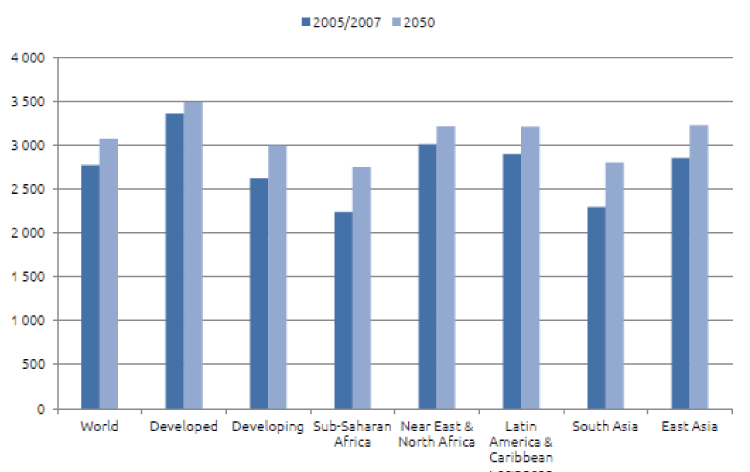
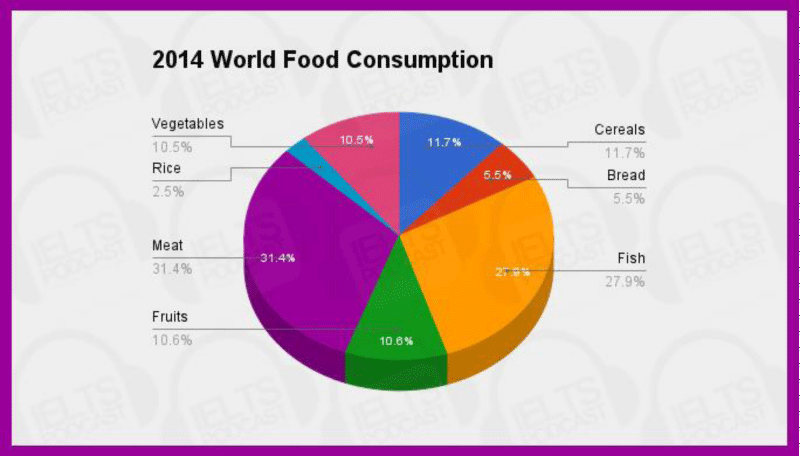
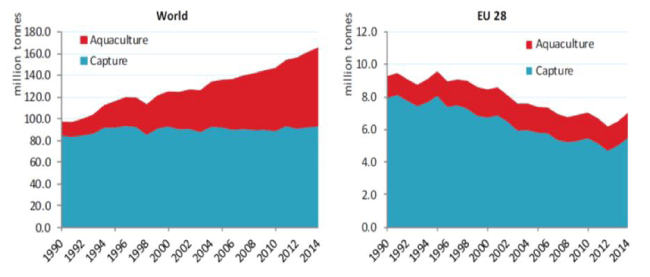
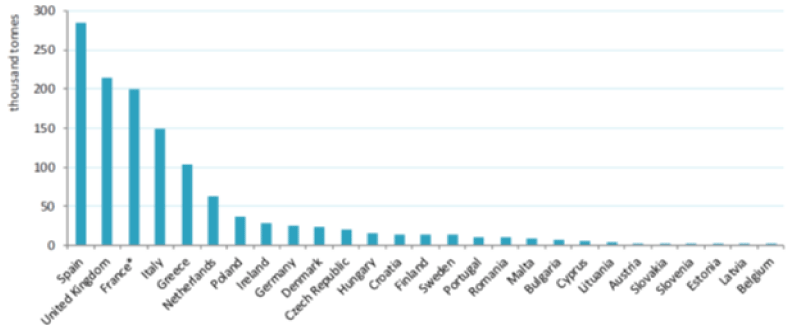
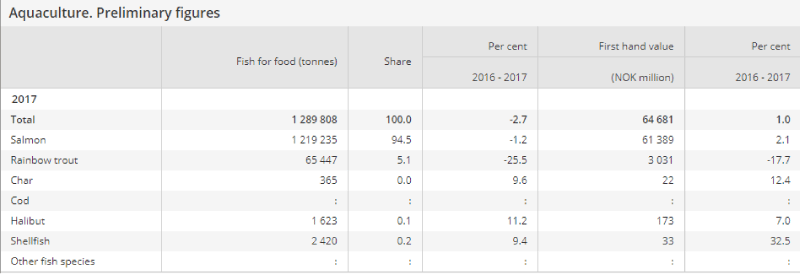
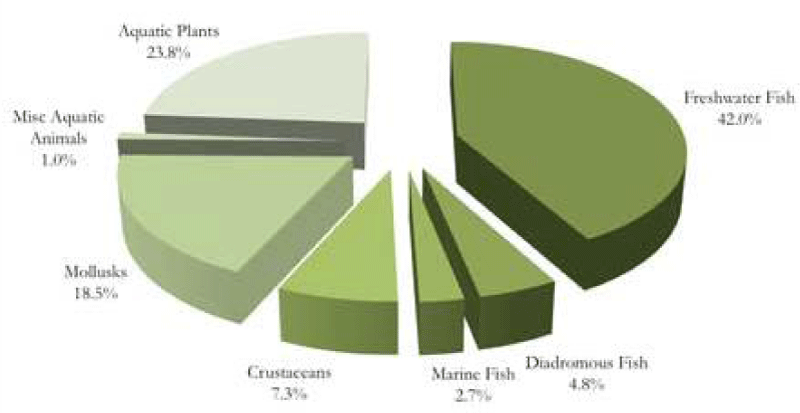
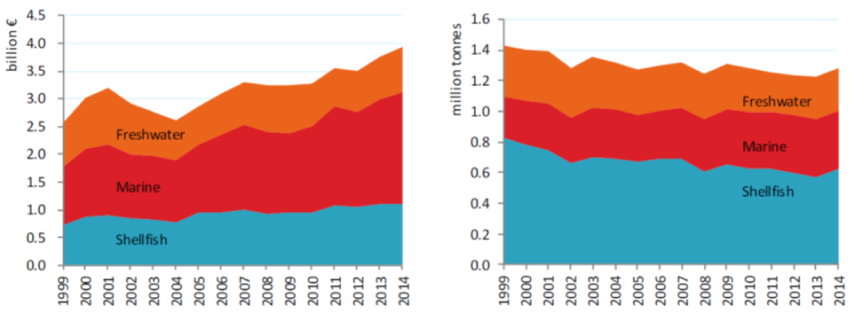
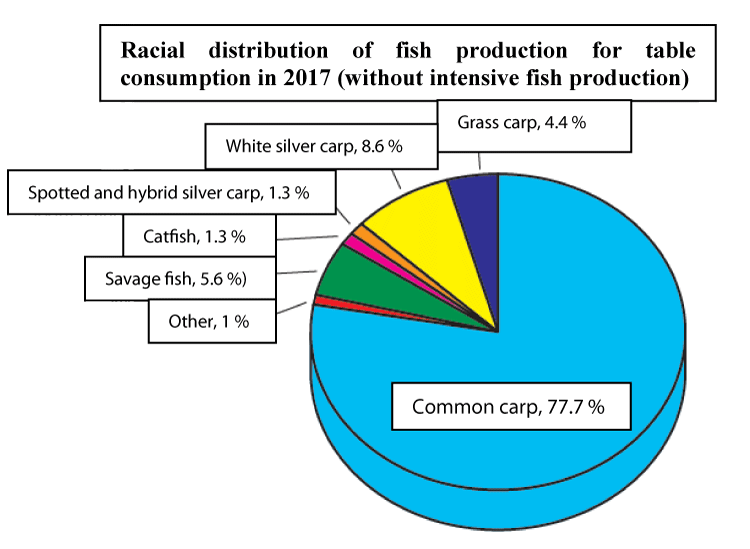
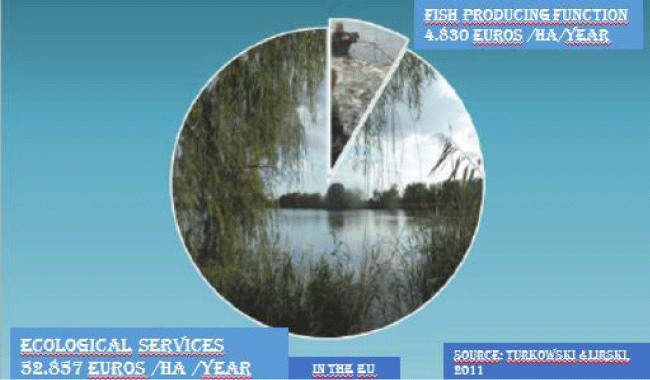
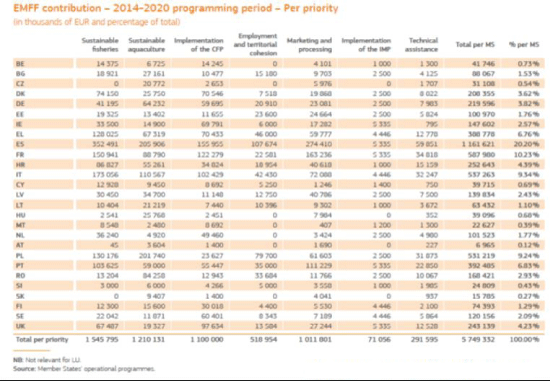
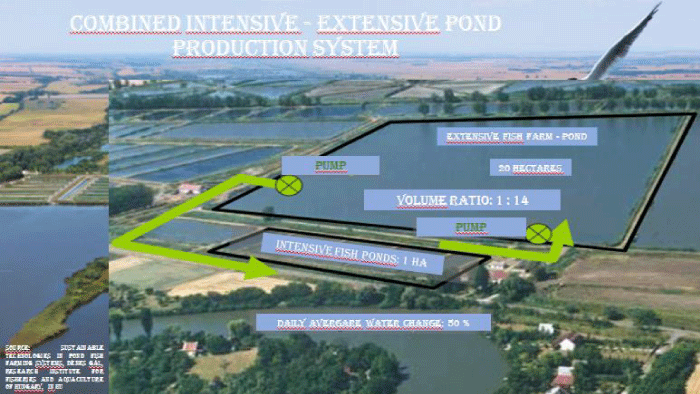
 Save to Mendeley
Save to Mendeley
